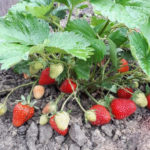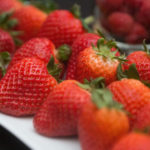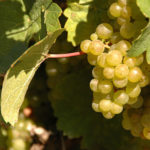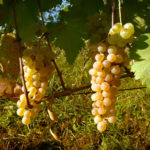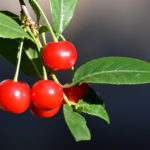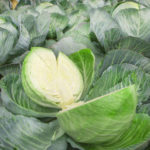Cabernet Sauvignon grape variety
There are hardly any people today who would not have heard the famous name of the grape variety and the eponymous Cabernet Sauvignon wine. Over the centuries since its inception, this name has become a household name, and the variety itself has remained the most widespread and demanded in the world for many years. And although today it lost the palm in popularity to another, no less legendary grape - Merlot, the areas occupied under it all over the world are still hundreds of thousands of hectares. It is grown on all continents of the globe, with the exception of Antarctica. Every year winemakers around the world produce a gigantic volume of Cabernet Sauvignon wine to meet the endless demand from the multi-million army of its fans.
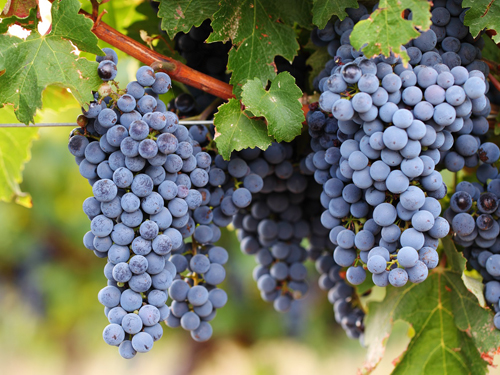
The history of the emergence of this variety of grapes goes back centuries. The first documentary evidence with its mention dates back to the distant 17th century. It was then that in the French province of Bordeaux, a hybrid of Cabernet Franc and Sauvignon Blanc began to be cultivated, in order to subsequently begin a triumphant march around the world. History does not name the author of this truly greatest crossing, it is generally accepted that hybridization occurred by chance. However, the fact that the growers from the very beginning called the new variety Cabernet Sauvignon, and it became possible to establish for certain its parents only in the 20th century thanks to DNA analysis, leaves no doubt that a man had a hand in the selection of the most famous grapes in the whole world. This person, without any genetic research, knew exactly which parental forms laid the foundation for a new hybrid and therefore called him by their names.
The variety possesses unpretentiousness, relative to the cultural Eurasian forms of grapes, is capable of growing and producing crops in a variety of climatic regions. It is winter-hardy enough and moderately resistant to a number of harmful fungal diseases. It tolerates drought well, but it still yields the most abundant crops in regions with sufficient moisture. It does not require overly complicated self-care, but at the same time responds well to increasing the level of agricultural technology, and is even adapted to the introduction of advanced technologies, including combine harvesting.
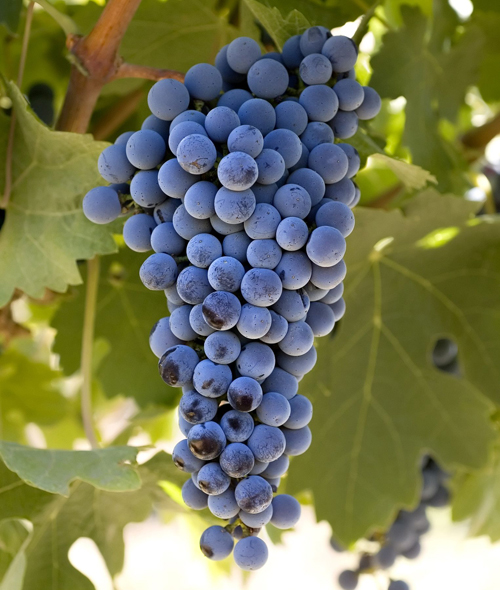
Agrobiological characteristics
Cabernet Sauvignon bushes are medium-sized. The crown of young shoots is light green with bright red edges of the denticles, has a dense pubescence of a light color. Ripe shoots are light brown. The leaves are medium, rounded, weakly funnel-shaped or flat, five-lobed, dark green, have a strong dissection. The surface of the leaf blade is reticulate-wrinkled; on the underside there is a barely noticeable cobweb pubescence. The upper lateral notches of the leaf are deep, closed with a triangular or cordate lumen, the lower ones are less deep, closed, lyre-shaped. The petiole notch is usually closed, deep, with a rounded lumen and a pointed bottom. The denticles along the edge of the leaf are triangular in shape with convex sides and rounded apices, unequal in size. The color of the leaves in autumn is red. The flowers of the variety are bisexual, pollination is usually good, and only in unfavorable years is the manifestation of a weak pea berry possible. Also, in some seasons, shedding of the ovary of grapes is possible.
Cabernet-Sauvignon clusters are medium-sized, cylindrical-conical, sometimes slightly winged, 14 × 8 cm in size and with an average weight of up to 100 grams. The comb is long - up to 7 cm. The berries are below average in size, round, with a diameter of about 1.4 cm and an average weight of 0.8-1.2 grams. The skin is thick, firm and rough, dark blue in color, covered with a thick layer of pruin on the outside. The pulp is juicy, herbaceous, with distinct nightshade notes in taste. Uncolored juice. Seeds are medium in size, one to three in number. The berries do not crack or rot, even in the wettest seasons.In the composition of the bunch, juice is 74%, the skin and dense parts of the pulp - 22%, combs - 4%.
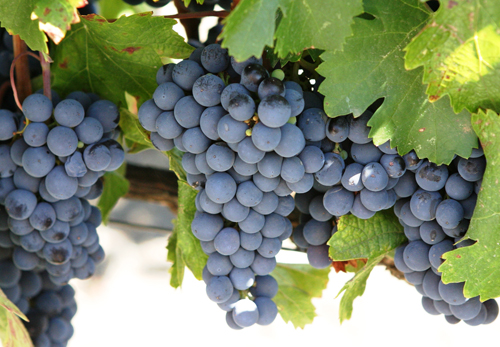
The harvest is intended to be processed into high quality wines. For many connoisseurs, Cabernet Sauvignon is a reference variety for wine production. It produces powerful, high-quality drinks with a high level of tannins, which determine the characteristic astringency of the wine, which is its hallmark. Also, a specific difference between wines from this grape is the presence in the bouquet of pronounced tones of black currant. Young wines from this variety can be slightly rough, but aging in oak barrels brings their organoleptic properties to perfection. In addition, it is often included in blends with other wines, due to which there is a mutual enrichment of the bouquets, and completely new multifaceted drinks are presented to the world, the variations of tastes and aromas of which are simply amazing.
Late ripening variety. The growing season of Cabernet Sauvignon before the onset of removable maturity is 140-145 days. However, due to the ability of the bunches to hang on the bushes for a long time without decaying, in warm autumn you can extend the growing season to 160-165 days in order to get the maximum possible sugar content of the berries, from which you will then get amazing quality dessert wines. In this regard, the harvest is removed from the bushes, depending on weather conditions, from late September to mid-October. At the same time, the sum of active temperatures ranges from 3000 ° C for bunches of the first harvest period, to 3300 ° C for the latest ones. The number of bunches for a developed shoot is 0.5-0.8, for a fruitful one - 1.1-1.3. At the same time, the grape yield, despite the very moderate fruitfulness of the shoots, is quite high for industrial varieties - 60−90 centners / ha. With good care and favorable weather conditions, the productivity of plantings is much higher. The frost resistance of the vine is quite high (-25 -27 ° C), which allows growing the variety without shelter in all regions where its harvest has time to ripen. Shoots ripen by 90% by the end of the growing season. Sugar content of berry juice at early harvest for the production of table wine - 21 g / 100 ml, at late harvest - up to 25%; acidity - in the range of 9-10 g / l.
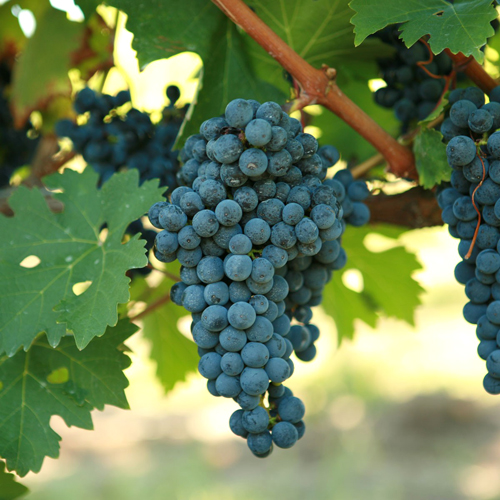
Agrotechnical features
With all its excellent technological properties, Cabernet Sauvignon needs care and fulfillment of certain whims. In particular, for cultivation, he prefers light, warm, well-drained and aerated soils of sandy or sandy-gravel composition. It grows worse on heavy clay and overly dry rocky soils, but it can adapt to them. The variety absolutely does not accept cold and damp growing areas.
Resistance to fungal diseases varies from tolerance to gray mold to susceptibility to powdery mildew. Mildew, on the other hand, is moderately affected. In accordance with this specificity, it is necessary to build plant protection. If preventive spraying is enough against mildew, then mildew must be dealt with in the most scrupulous way, especially in the most favorable periods of its development (air temperature 25-27 ° C and humidity 85-95%). The situation is similar with pests. If Cabernet Sauvignon is rarely affected by the grape leafworm, then spider mites and itching will need to be fought with the help of acaricides. Our hero is resistant to phylloxera better than other European varieties, but it is still propagated mainly in a grafted culture. The best rootstocks are Riparia x Rupestris 101-14 and Berlandieri x Riparia Kober 5BB. Fusion with rootstocks is high.
Plants are formed in traditional wine-growing regions on a high stem, thanks to the good frost resistance of the variety.At the same time, the ways of placing the annual growth of grapes in space may differ. In traditional culture, Cabernet Sauvignon is grown with free-hanging annual shoots, while the row spacing should be at least three to four meters. If you work hard and tie up the growth vertically, then the distance between the rows can be reduced by a meter and a half. Such an arrangement will also improve the ventilation of the bush, which will serve as an effective prevention against fungal diseases. It should be borne in mind that due to the inherent polarity of plants, the vertical arrangement of the shoots enhances their vegetative functions, and the horizontal - generative ones. Therefore, in variants with free hanging vines, the quality of the grapes may be slightly higher.
Fruit shooters are pruned to an average length of 5-6 eyes. It has been proven that Cabernet Sauvignon clusters located closer to the base of the fruit arrow accumulate several percent more sugars than on the periphery. After the beginning of the growing season, it is necessary to carry out a fragment of sterile and weak young shoots in order to redirect the maximum of plastic substances to the formation of the crop.
Despite the fact that our hero is a fairly drought-resistant variety, the use of irrigation can significantly increase the productivity of plantings, because in arid conditions grapes form clusters of much smaller size than in the case of an optimal water regime of the soil. The use of moderate doses of fertilizers in the vineyard will also give a positive result.
In general, the implementation of the required minimum of standard agrotechnical measures ensures that Cabernet Sauvignon will endow the grower with an excellent harvest. After all, it is not for nothing that in places where different classic European varieties, including very pampered ones, grow, our hero, for his relative unpretentiousness, is sometimes jokingly called grapes for the lazy. But despite this, the divine drink from it is invariably called the King of red wines.
